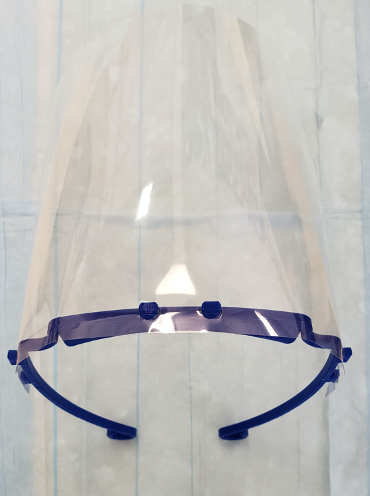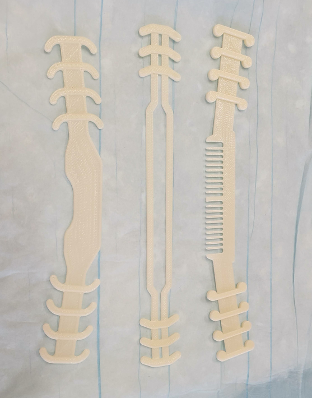At the end of March, hospitalizations due to Covid-19 were rapidly rising in New York City. Frontline professionals were facing dire shortages of

personal protective equipment. Under the leadership of CTSC Program Director, Dr. Julianne Imperato-McGinley, and together with Dr. Yuan-Shan Zhu, Director of the Core Lab at the Weill Cornell Clinical and Translational Science Center (CTSC), it was decided to repurpose high-end 3D printing in the fight against the epidemic. Dr. Zhu consulted with a former CTSC trainee with bioengineering expertise, Dr. Tony Chen, now a faculty member at the Hospital for Special Surgery. Drs. Zhu and Chen identified a three-dimensional model of a headband that can be attached to a plastic shield, downloaded it from the internet, and began printing. As of the end of June, they produced over 350 face shields using the 3D printed headbands and distributed more than 275 of them to seven units at Weill Cornell/NewYork Presbyterian Hospital. The face shields served a critical need in the clinics and laboratories as they slowly began reopening.
The first face shields were donated to the Lower Manhattan Hospital campus of the New York–Presbyterian Hospital, and requests were later filled for the Pathology and Clinical Microbiology departments, the Divisions of Geriatrics, Endocrinology, and Infectious Diseases, and the Genomics Core laboratory. The face shields are also being used in-house by the CTSC outpatient unit and core laboratory, which processes specimens and conducts laboratory testing for patients with Covid-19.
According to Dr. Zhu, the face shields were well received. “We made some modifications to improve the initial design,” said Dr. Zhu. One person who wore an N-95 mask mentioned that the face shield would sometimes come into contact with the mask. To accomplish the modifications Dr. Chen revised the design so that the headband provided more separation between the face shield and the mask.

A second modification was made to accommodate wearers with fuller heads of hair. The team also began printing an optional accessory called an “ear saver” that can be attached to a band worn around the back of the head. The device prevents ear pain by relieving pressure caused by the band along the ear. The design for the ear saver was downloaded from a NIH-approved digital file and then 3D-printed.
As the ongoing need for personal protective equipment continues, the Lab will continue printing the shields as it transitions back to its research mission. The 3D printing effort exemplifies the ways that Weill Cornell Medicine, in collaboration with the Hospital for Special Surgery, have responded to critical needs in the fight against the pandemic.
Michael E. Bales, MPH, PhD is a Research Impact and Evaluation Informationist in the Clinical and Translational Science Center at Weill Cornell Medicine.

